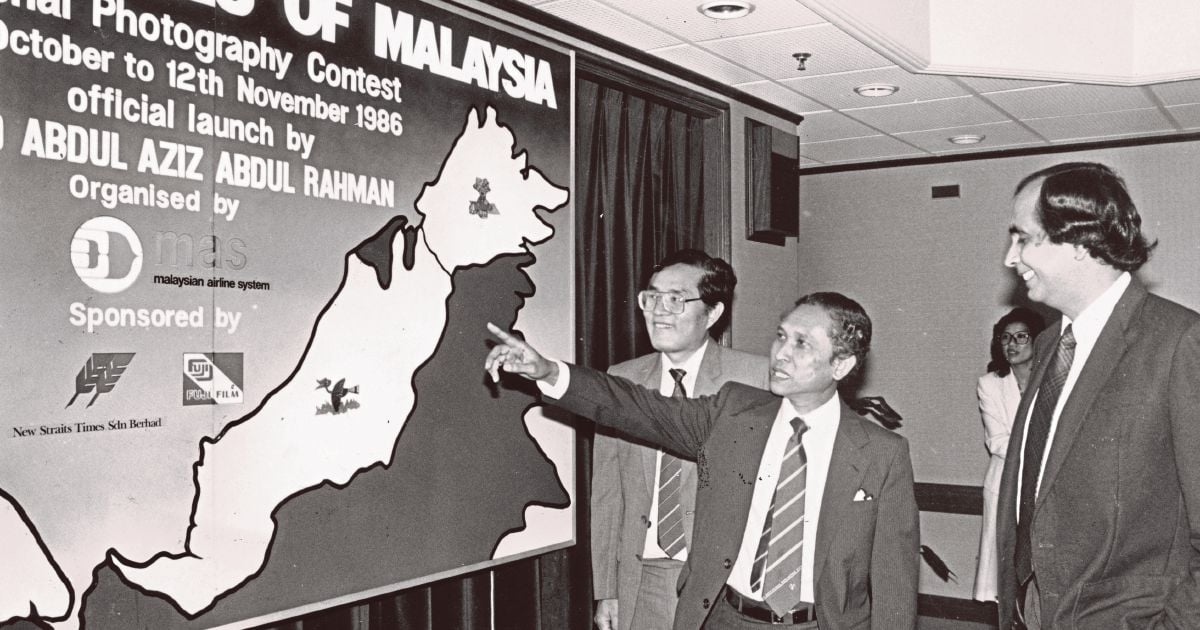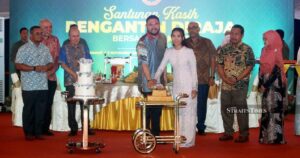VISITING the New Straits Times (NST) office for the first time remains one of my most vivid and cherished memories. It was a day when curiosity and determination led me to the man behind the “Letters to the Editor” column, to which I regularly contributed. That meeting would go on to deeply inspire my writing journey.
I parked my motorcycle beside Balai Berita, the building that housed the NST. The entrance was modest but carried an air of history and importance.
Upon entering, I was greeted by a receptionist whose warm smile immediately put me at ease. I told her I was there to deliver a letter to the editor of the “Letters to the Editor”; she told me to look for Zainon Ahmad, affectionately known as Pak Non.
She said that his office was next to the editorial team and told me to take the lift to the third floor.
The lift’s wooden panels gleamed under soft lighting, exuding a classic, almost nostalgic charm. The gentle hum of the machinery was accompanied by the faint scent of aged wood and polish, a reminder that this building had witnessed decades of journalistic history.
Stepping out into the third floor, I was immediately enveloped by the vibrant energy of the newsroom. The editorial room was vast and alive with activity. Journalists sat at their desks, some typing furiously on computers, others tapping away on typewriters, the clatter blending with bursts of laughter and animated conversations in corners.
The aroma of freshly brewed coffee mingled with the faint rustle of newspapers and the occasional ring of telephones. It was about 5.30pm, the most intense hour for the editorial team, yet the atmosphere was warm and welcoming.
I approached a man who was focusing on his computer screen, and asked for Zainon’s office. He pointed towards a room with a wooden panelling and a glass window that allowed one to see inside.
Looking through, I saw a man. He had neatly combed hair, slicked back with hair cream, a goatee that framed his face and an untrimmed moustache. His thick, black-framed spectacles sat low on his nose, giving him an air of scholarly seriousness mixed with approachability.
As I introduced myself, his eyes widened in surprise.
“I thought R.K. Ravindran was a retired old man,” he said, laughing heartily. “My God, you’re so young to be writing letters!”
That warm, genuine laughter broke the ice instantly. I told him about my involvement with the Institute of Strategic and International Studies Malaysia and my passion for writing. Then, almost playfully, he asked if I could speak Tamil.
When I said yes, he began speaking fluent Tamil, and I was completely taken aback — a Malay man conversing effortlessly in another language!
It turned out he was from Kedah, just like me, and had grown up in the estates. That shared background created an instant bond between us.
Our conversation flowed easily for about 15 minutes. I took the opportunity to ask why my letter about the Bukit Jalil estate had not been published despite sending it three times.
I handed him a copy, and after reading it quickly, he explained candidly: “The estate has some of our regular advertisers who bought parts of the land, so it’s a sensitive issue.”
He suggested I speak to his boss, who was in a room nearby. I thanked Pak Non profusely for publishing all my other letters without fail and made my way to his superior.
The woman at the door greeted me warmly, asking the purpose of my visit. When I mentioned Pak Non’s referral, she opened the door to a man seated inside.
He was handsome, wearing a crisp white shirt and tie, with spectacles perched precariously on his nose. He looked up and asked for my name.
After reading my letter in a few seconds, he asked what I wanted him to do. I explained the dire condition of the estate and my hope that the letter could be published to raise awareness.
He made no promises, but assured me that he would try. We shook hands and I left. That was P.C. Shivadas.
Walking back through the editorial room, I was struck by the sense of purpose and camaraderie among the staff. Though I didn’t know anyone else then, I felt a deep connection to this place — the very newspaper I had grown up reading.
To my surprise and delight, within three days, my letter was published prominently. I called Zainon and Shivadas to thank them. Their support and encouragement made me feel valued and inspired me to continue writing.
Pak Non remained a close friend until his passing. He was a man who loved his teh tarik at the Hilton Petaling Jaya and carried a gentle spirit beneath his sharp journalistic mind. Shivadas, too, remains a legend in my life, embodying patience, love and care.
Looking back, those moments at the NST office were more than just visits: they were life-changing encounters with two great stalwarts of Malaysian journalism.
They weren’t just editors, they were also mentors who inspired me to cherish the beauty of our world, our people and the power of the written word to make a difference. Their kindness and integrity left an indelible mark on me and my writing.
Stepping into the NST newsroom was more than just entering a building — I had stepped into a world where truth, passion and humanity converged, shaping not only a newspaper but also the lives of those it touched. I am one of them.
Although Pak Non has since passed, and Shivadas has left the NST, I offer my salute and deepest thanks to both of them.
© New Straits Times Press (M) Bhd






